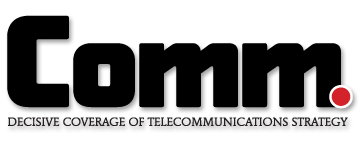Huawei has unveiled its latest series of Ascend smartphones across the Middle East as the company looks to deliver on its new “Make It Possible” consumer platform while advancing its position amongst the top five worldwide smartphone brands.
The Ascend P2—the world’s fastest 4G LTE smartphone—and the Ascend Mate—the world’s largest smartphone with a 6.1” screen—were originally previewed at this year’s Mobile World Congress and Consumer Electronics Show. In a similar style, the two devices were recently revealed in the Middle East and are set to be on retail shelves across the region by June.
“We first launched the product name ‘Ascend’ just over a year ago, and have since introduced a series of products offering the perfect combination of elegance and power,” said Jiao Jian, president of Huawei Device Middle East.”
The Ascend P2 is the world’s fastest 4G LTE smartphone featuring a 1.5 GHz quad-core processor and is compatible with LTE Category 4, providing an ultrafast web experience with download speeds of up to 150 Mbps. Running on the Android 4.1 operating system and with Huawei’s own Emotion 1.5 user interface, the smartphone is capable of downloading HD movies in minutes while loading online videos, web pages, songs or e-Books in just seconds.
The Ascend Mate boasts a screen-to-body ratio of 73 per cent – the highest in the industry – which maximises viewing pleasure for emails, documents, videos and games. The 6.1-inch high definition LCD screen has a resolution of 1280 x 720 for unsurpassed clarity and colour accuracy, with the ‘Magic Touch’ feature providing enhanced screen responsiveness.
Huawei has only recently pushed into the consumer electronics segment in the Middle East over the past two years with devices like its Ascend P1 S and the MediaPad 10 FHD tablet.
It’s most recent expansion within the Middle East market helped the company’s worldwide consumer business realise global sales revenue of US$7.7 billion last year—an increase of more than eight per cent year-on-year—shipping more than 127 million devices.
Today Huawei’s main ‘Ascend’ smartphone line spans four different product series including a Youth, Gold, Platinum, and Diamond class, which each offer a unique technology package to consumers at a variety of different price points.



